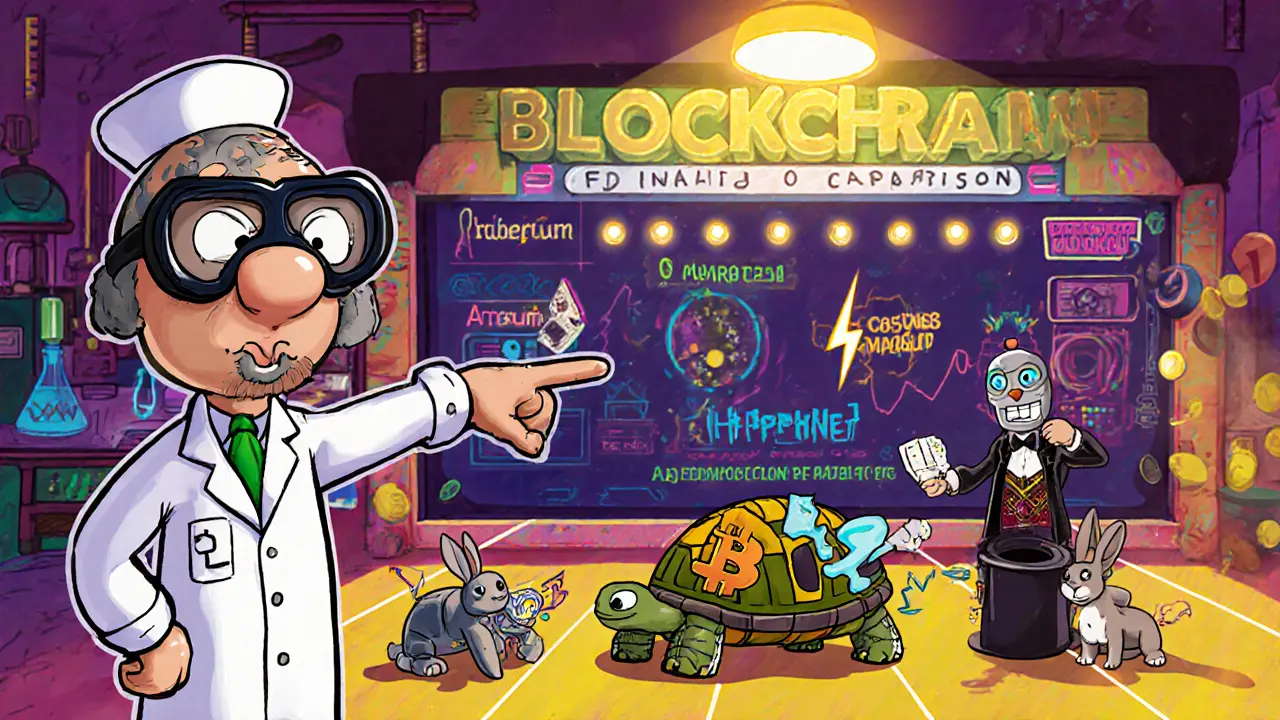Time to Finality – Why Speed and Security Matter
When talking about Time to Finality, the period from when a transaction is broadcast to when it becomes irrevocably part of the blockchain, also known as finality time, you’re looking at the heartbeat of any blockchain system. Shorter finality means traders can confirm moves faster, developers can build tighter user experiences, and investors face less exposure to double‑spend attacks. But speed doesn’t come for free – it bumps into the design of the blockchain consensus, the rule set that decides which blocks win. A consensus that favors rapid agreement often trades off deeper validation, while a more thorough protocol can slow down the finality clock. Understanding these trade‑offs helps you pick the right chain for your needs, whether you value lightning‑fast swaps or rock‑solid security.
Fast Finality, Transaction Speed, and Security: The Core Trade‑offs
The term fast finality, a design goal where blocks are confirmed in seconds rather than minutes is popular in modern Layer‑1s and Layer‑2s. Projects that achieve fast finality usually rely on specialized consensus algorithms like Tendermint, HotStuff, or Optimistic Rollups. These mechanisms let a transaction jump from “pending” to “final” in a handful of seconds, which is great for high‑frequency trading or gaming. However, the transaction speed, the rate at which a network processes and finalizes transactions per second (TPS) is only as trustworthy as the underlying security, the network’s ability to resist attacks and keep data tamper‑proof. A chain that pushes for higher TPS might reduce the number of validator signatures needed for finality, increasing the risk of a malicious actor slipping in a fraudulent block. So, the classic semantic triple is: Fast finality requires blockchain consensus that balances transaction speed and security.
In practice, developers face a series of choices. Do you adopt a proof‑of‑stake (PoS) model that offers near‑instant finality but needs a robust slashing mechanism to deter bad actors? Or do you stick with proof‑of‑work (PoW) where finality takes longer, yet the economic cost to attack is huge? Real‑world examples show the spectrum: Cosmos chains often hit sub‑second finality with Tendermint, while Bitcoin settles in about ten minutes, delivering rock‑solid security. By mapping your use case—whether it’s DeFi swaps, NFT minting, or cross‑chain bridges—you can decide how much finality latency you can tolerate.
Beyond consensus, network design choices like shard‑ing, parallel processing, and zk‑rollups also reshape time to finality. Sharding splits the ledger into pieces, letting multiple validators work in parallel, which can shave seconds off confirmation. zk‑rollups batch many transactions off‑chain and publish a succinct proof on‑chain, achieving rapid finality without compromising data availability. Each of these techniques introduces its own set of trade‑offs: shards need reliable cross‑shard communication, and zk‑rollups rely on trusted proof generators. The common thread? Every improvement to reduce finality time must still respect the core security guarantees that keep the ledger honest.
What you’ll find in the collection below is a deep dive into these themes. From an analysis of fast‑finality trade‑offs in different consensus models to practical tips for developers building on low‑latency chains, the posts cover both theory and hands‑on guidance. Whether you’re a trader who needs instant trade confirmation or a protocol designer balancing speed against attack resistance, this roundup gives you the context to make informed choices about time to finality.

